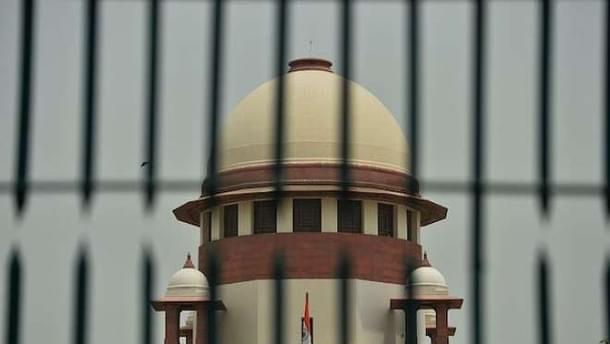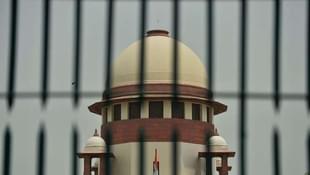Ideas
Tech Solutions, Like Blockchain, Won’t Help Much In Solving The Crisis In Judiciary
Ananth Krishna
Mar 10, 2018, 05:55 PM | Updated 05:55 PM IST
Save & read from anywhere!
Bookmark stories for easy access on any device or the Swarajya app.


Blockchain seems to be the flavour of the season. There is a great deal of interest in the application of technology, especially in governance reforms. The Union Finance Minister, Arun Jaitley, while reiterating the ‘ban’ on cryptocurrency in India, also stated that the Government will ‘explore’ the application of the technology. Blockchain is being suggested by many as a pancea for all the ills that the state faces with respect to infomation management - from reducing homelessness to judicial reform. The proposal has some merit, and requires some discussion.
Amitabh Kant, the CEO of NITI Aayog, the Union Government’s premier ‘think-tank’ has also championed the use of blockchain, especially in the field of judicial reform. Tweeting in January that blockchain can eliminate pendency in India, he said:
Blockchain technology can eliminate the 3 crore cases pending in Courts in India & wipe out the 40 Lakh cases relating to land & land disputes. Land registry on the Blockchain will reduce litigation & knock out corruption related to land.
— Amitabh Kant (@amitabhk87) January 24, 2018
It is not a suggestion that should be dismissed out of hand. Kant had pointed out certain deficiencies in the judicial system with respect to performance indicators of Judges in an Op-ed way back in May 2017. He argues in the article that the adoption of twenty first century technology by the judiciary could help in the creation of an efficient system that creates judicial accountability and transparency. It is to this end that he suggested the use of blockchain technology.
Blockchain is no doubt revolutionary, and the creation of decentralised registry of the performance of judges and a land registry will no doubt prove to have far reaching consequences. It will allow a great deal of transparency, efficiency, and eliminate avenues for bureaucratic corruption, by allowing the creation of a secure, resilient and transparent database, impervious to hacking.
Before we go on, let's take a step back. What exactly is blockchain? How will a land registry mechanism on blockchain work?
As detailed in this Swarajya Staff report, blockchain is very simply a growing list of records that are linked to each other. In other words, it is like a spreadsheet that has been duplicated across a network of computers, and the network is designed such that it regularly updates the spreadsheet. Blockchain stores blocks of information identically across its network. This means that it cannot be controlled by any single entity, and has no single point of failure.
However, blockchain, as disruptive it is, cannot solve the fundamental structural deficiency and institutional mismanagement that has become a feature of the judiciary.
Let us firstly examine the issues that face the legal system briefly - the Supreme Court, ever prone to expanding its own jurisdiction, has more than 50,000 pending matters as of November 1, 2017. There are 400 vacancies in the various high courts, and almost 5,000 empty posts in the lower judiciary. This is not to mention the total volume of pending matters in the country, which total around 3 crore, as pointed out by Kant. Creating more posts in the judiciary - higher courts or otherwise, has clearly not helped. Reforms such as the digitisation of courts may diminish the burden on the legal system, but it will not solve it in its entirety.
Any discussion on the reforms of the legal system must keep in mind that we cannot sacrifice justice for faster disposal. On the other hand, a broken legal system like ours can cause significant societal unrest in the long run, not to mention that it serves as an impediment to growth. Therefore, it is essential that our legal system be fixed.
The solution entails wide ranging institutional reform of the Judiciary and the legal system as a whole. But any proposed reform faces the risk of being axed by the Supreme Court, as evidenced by the striking down of the NJAC Act. The proposal to start a All India Judicial Service for the lower courts faces huge hurdles from various High Courts who do not want to let go of their power. It would also be pertinent to remember that the judiciary is a body that exercises its ‘independence’ by appointing its own officers, and striking down any form of legislative or executive action that attempts to bring in any amount of reform or transparency. It is in recent history itself that a Judge of the Supreme Court wrote a letter to the Chief Justice crying foul at the decision to make the rationale of collegium discussions public.
Expecting the judiciary to accept any reform without any qualms would be foolish. We cannot however, do without reforms. The introduction of data systems like blockchain could help with the resolution of future land disputes and play a role in evaluating the performance of judges, but neither will it be accepted without qualms by the judiciary, nor will it be a long term solution to the problems in our legal system.
The judiciary ought to conform to its place in the system, and refrain from overstepping its boundaries. The executive and legislature must assert their powers, rather than sitting comfortably in passivity. Futuristic solutions like blockchain technology must be peripheral one, with the assertion of executive and legislative authority taking priority. It is essential for the health of the republic that they do.
The author would like to thank Mandar Kagade for his inputs.
Ananth Krishna is a lawyer and observer of Kerala's politics.





